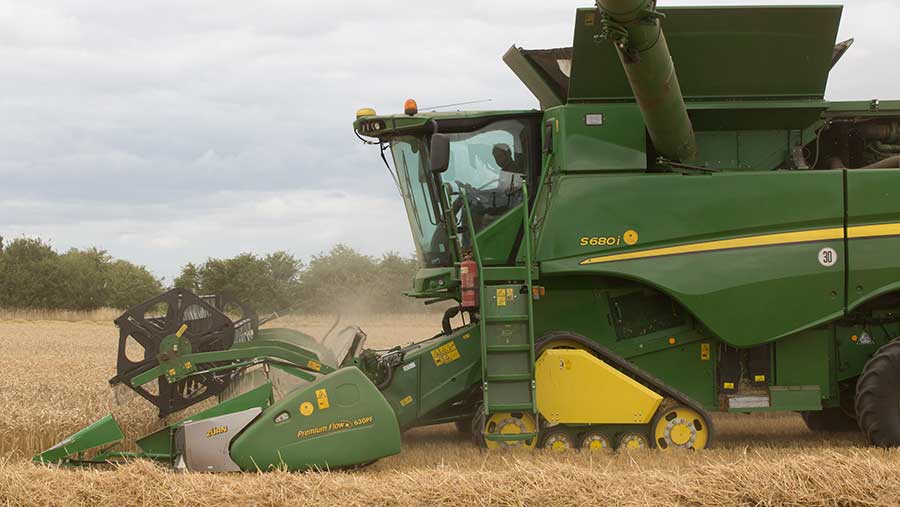New crop wheat sees steady prices on supply concerns
 © Tim Scrivener
© Tim Scrivener New crop feed wheat values are holding steady as harvest approaches, with little UK old crop on offer and weather worries to the fore.
August values were between £126/t and £133/t ex-farm on Friday (2 June), averaging £128.25/t.
Ex-farm harvest offers for new crop feed barley were at £101/t-£110/t.
Old crop feed wheat eased slightly over the week, putting it in a spot range of £135/t-£147/t ex-farm on Friday (2 June).
“Old crop is all but over, and market focus is all about weather and new crop prospects,” said Gleadell managing director David Sheppard.
See also: Tips for reviewing arable insurance
“Impending harvests will make short-term rallies difficult to sustain as the world still has plenty of wheat, although new crop quality fears are starting to intensify.”
At £130.50/t in the week to 25 May, the price for August delivered feed wheat was the highest it has been at this stage in the season since 2014, said AHDB Cereals & Oilseeds
The discount between the value of the UK November 2017 feed wheat futures contract and the Paris milling wheat futures contract recently closed to its narrowest since 2013, when a small UK crop was expected after the wet autumn reduced winter crop plantings, said AHDB.
“While prices are slightly below that peak now (£141.50/t on 30 May), they are still the highest new crop prices recorded at this stage ahead of harvest since 2013.
“Similarly, the discount of UK feed wheat futures to Paris milling wheat futures has grown again slightly, but remains relatively small,” said an AHDB report this week.
Weather worries include very dry weather in Spain and concerns over quality ratings for US spring and hard red winter wheats.
Tight UK supply
While globally there will be plenty of wheat, the market here appears to be expecting a relatively tight UK wheat supply.
“Should UK supplies prove higher than seems to be expected, then prices may need to realign slightly and drop back against Chicago and Paris futures,” said Helen Plant, senior analyst, AHDB Market Intelligence.
“However, even if a tight supply situation is confirmed post harvest, the potential for relative price rises, on the back of that situation, is more limited than we saw last autumn.
“In autumn 2016 UK wheat prices rose, as the tight supply and demand situation became clear, until they started to make imports attractive in early 2017. Over that same time period, UK prices moved from a discount in the region of £15/t to Paris to a premium.
“With UK feed wheat futures already trading at a much-reduced discount to Paris, even if UK supplies are tight, the range of movement until the market attracts imports may be less.
“This is because the market already seems to be pricing in a relatively tight supply situation in the season ahead, while a year ago it wasn’t. While movements in the global market could still be far larger than such a shift, uncertainty around the UK supply and demand position in 2017-18 could well add to price volatility.”
